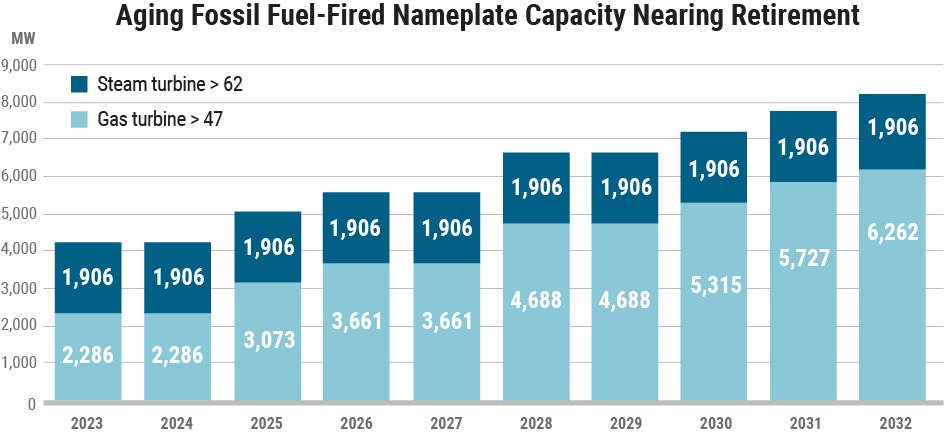NYISO’s Comprehensive Reliability Plan Reveals the Grid’s Graying Generation

The machines that provide modern comfort and convenience have an expected life span. A report from the National Association of Home Builders found that most major home appliances have a life expectancy between 15-20 years. Additionally, the average age of cars and light trucks on the road today is just 12.5 years – according to a recent analysis from S&P Global.
Remarkably, 149 fossil-fuel generators that power the grid across New York are at least 40 years old and can generate 12,898 megawatts (MW) – which represents more than a third of total summer capacity.
Data in our 2023-2032 Comprehensive Reliability Plan (CRP) shows a growing number of those fossil-fuel generators are reaching an age at which a majority of similar units across the country have been deactivated.
As our Vice President of Operations, Aaron Markham said, “We are increasingly reliant on an aging fleet of generators to provide for the continued reliability of the system as we transition to more intermittent resources.”
The following figure shows that by 2028, more than 6,500 MW of gas-turbine and steam-turbine based capacity in New York will reach an age beyond which 95% of similarly aged generators have been taken out of service nationally.

As these fossil-fuel generators age, experiencing more frequent and longer outages, the cost to maintain them increases. The expense of maintenance, combined with the impact of policies to restrict or eliminate emissions, may drive aging generators into retirement. In turn, those retirements will contribute to declining reliability margins.
In addition to the concerning issue of aging fossil-fuel generators, the CRP shows that the pace of generator deactivations is exceeding the development of new generating resources. Since the passage of the Community Leadership and Climate Protection Act (CLCPA) in 2019, 4,705 MW have left the system while only 2,034 MW have been added. This net loss of 2,671 MW represents enough energy to power at least 2 million homes.
Deactivating fossil-based generation to meet the state’s climate policies will require large investments in renewable resources, energy storage, and transmission projects across the state to meet rising demand for electricity through 2040.
Our 2021-2040 System and Resource Outlook report found that the amount of capacity on the bulk electric system will need to triple to meet New York’s climate goals while maintaining reliability. The scale of required resource additions over the next 16 years is unprecedented.
Considering the challenges associated with aging fossil-fuel generators, the pace of resource retirements and development, rising demand due to electrification, and other changing system conditions, it’s clear that the power system is being tested unlike any point in New York’s history.
